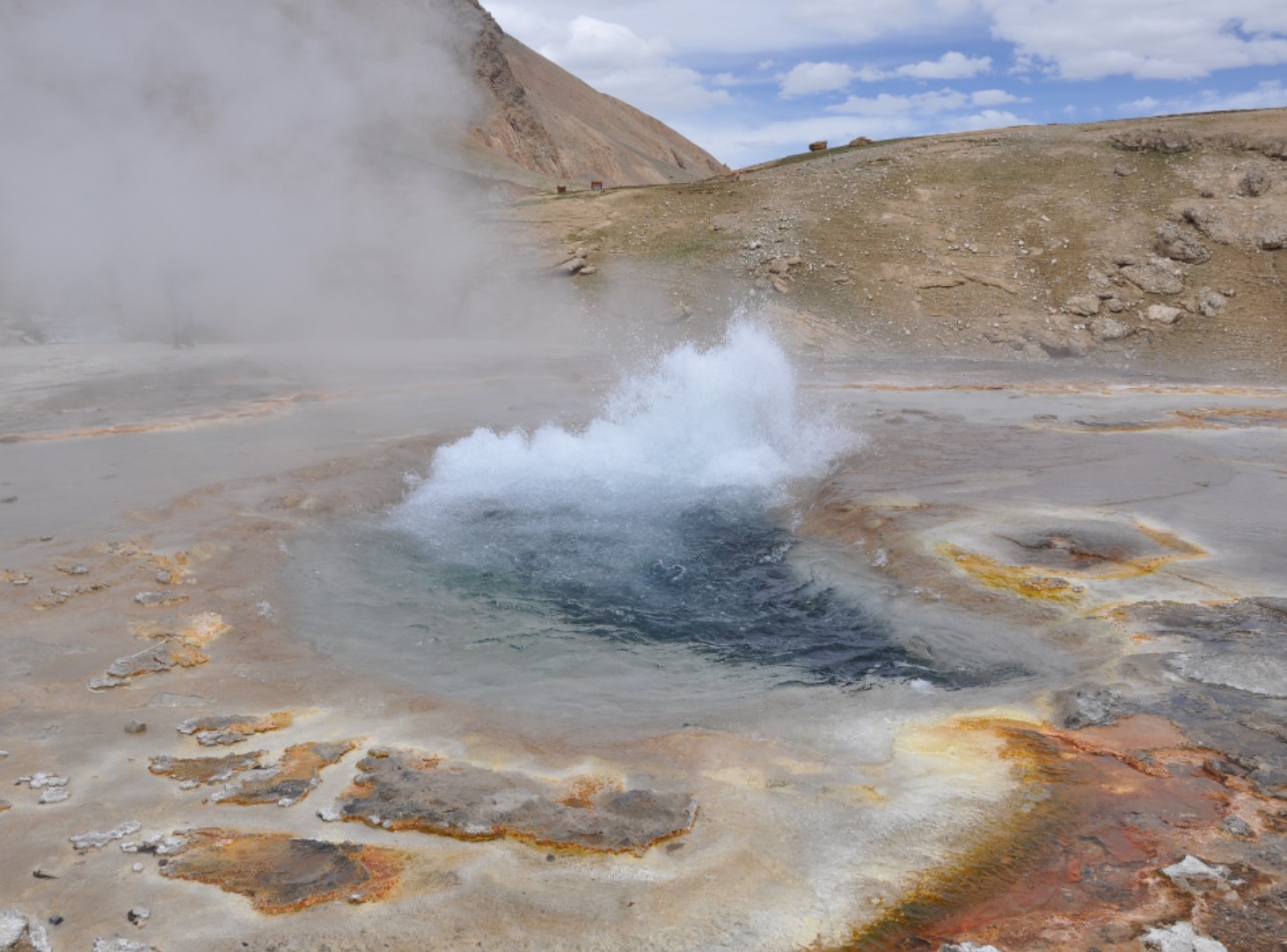
A joint research team led by Prof. GUO Zhengfu from the Institute of Geology and Geophysics (IGG) of the Chinese Academy of Sciences found that the metamorphic and volcanic CO2 emission rates on Tibetan Plateau correlate well with the global atmospheric CO2 curve, which suggested the India-Asia collision was the primary driver of changes in atmospheric CO2 over the past 65 million years.
Their findings were published in Nature Communications on June 23.
Earth's climate cooling in Cenozoic (65 million years ago-present) are thought to be related to the decreasing atmospheric CO2 concentrations, however, factors leading to such decreases remain highly controversial.
Based on the India-Asia collision, the researchers investigated tectonic and volcanic contributions to atmospheric CO2 from deep terrestrial sources.
Through systematic geochemical data and analysis of magmatic rocks in Tibet, the researchers proposed a three-stage evolution model of Cenozoic magmatism in Tibet. The Stage 1 magmas (65-55 Ma) are Andean-type igneous rocks in southern Tibet, Stage 2 magmas (55-25 Ma) are composed of large-scale lava flows and pyroclastic deposits, and Stage 3 magmas (25 Ma-present) are small-volume lava flows distributed in southern and northern Tibet.
"We developed a continental collision-derived CO2 flux model (CCFM) to estimate the CO2 emission flux from magmatism and metamorphism across the whole Cenozoic," said Prof. GUO. Calculated results yielded a broad range of CO2 degassing fluxes from ~0.0001 to 10 Pg (1Pg = 109 Tons) in Cenozoic.

Deep CO2 emissions from Dagejia hydrothermal field in Tibetan plateau. (Image by Prof. GUO Zhengfu's group)
The strong correlation between magmatic activity, source region composition, modelled CO2 outgassing rate and atmospheric CO2 concentration is fully consistent with a causal link between India-Asia collision and global CO2 variations, and the related paleo-climate changes in Cenozoic, which highlights the carbon contribution from subduction-induced carbonate metasomatism in continental collisional zones.
The study was conducted in collaboration with scientists from University of Leeds and Ludwig Maximilian University of Munich.
It was supported by the Strategic Priority Research Program (B) and Key Research Project of Frontier Sciences of Chinese Academy of Sciences, the National Natural Science Foundation of China, the Second Tibetan Plateau Scientific Expedition and Research Program, and the National Key Research and Development Program of China.

86-10-68597521 (day)
86-10-68597289 (night)

52 Sanlihe Rd., Xicheng District,
Beijing, China (100864)

